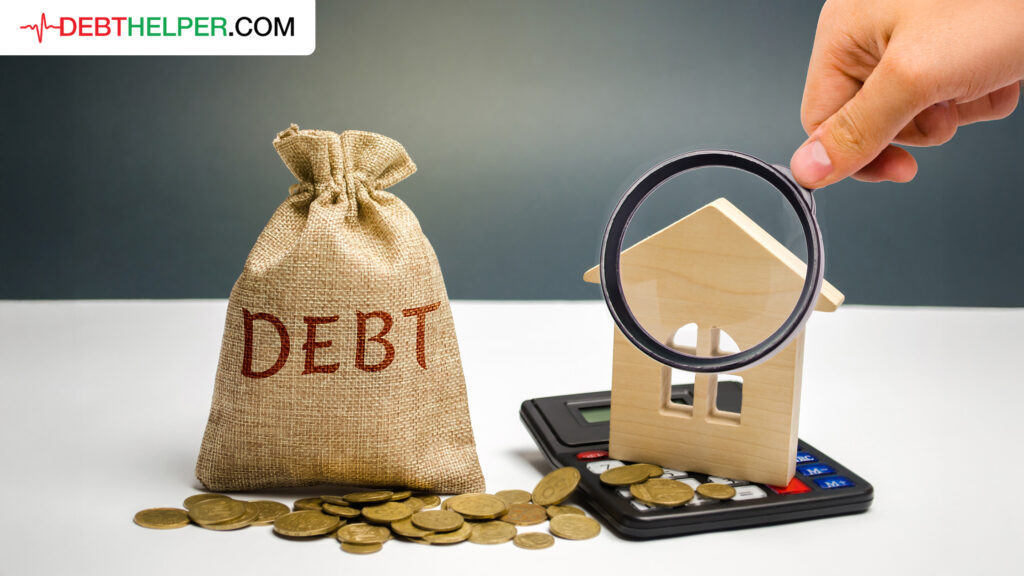Debt can be a heavy burden on your financial well-being. Whether it’s credit card debt, student loans, or a mortgage, the weight of owing money can feel overwhelming. The good news is that there are effective strategies to help you reduce your debt faster, alleviate stress, and build a solid financial future. In this blog, we’ll explore expert-approved step-by-step debt reduction plans that can help you pay off your loans quickly and efficiently.
1. The Snowball Method: Paying Off Smallest Debts First
The debt snowball method is one of the most popular debt reduction strategies. This approach involves paying off your smallest debt first while maintaining the minimum payments on your other loans. Once the smallest debt is paid off, you move on to the next smallest debt, and so on. This method is particularly effective for those who need motivation, as the satisfaction of eliminating debts can keep you on track.
Step-by-Step:
- List all your debts in order of the smallest to largest.
- Pay the minimum payments on all debts except for the smallest one.
- Put as much money as you can toward paying off your smallest debt.
- Once the smallest debt is paid off, move on to the next smallest and repeat the process.
- Celebrate each victory, no matter how small. The momentum will keep you motivated.
Why It Works:
- Psychological boost: As you pay off one debt after another, success builds momentum, making it easier to keep going.
- Increased motivation: Each small win encourages you to keep pushing forward.
2. The Avalanche Method: Pay Off High-Interest Debts First
If you’re focused on saving money on interest over time, the debt avalanche method might be more suitable. This strategy involves paying off debts with the highest interest rates first while making the minimum payments on your other debts. Although it may take longer to see the first debt paid off, the avalanche method will save you the most money in interest payments in the long run.
Step-by-Step:
- List all your debts in order of highest to lowest interest rate.
- Pay the minimum payments on all debts except the one with the highest interest rate.
- Put as much money as you can toward the highest-interest debt.
- Once the highest-interest debt is paid off, move to the next highest and repeat.
- As you eliminate high-interest debts, you’ll save money on interest payments, allowing more money to go toward the principal.
Why It Works:
- Cost savings: This method minimizes the total interest paid, reducing the overall cost of your debt.
- Efficient: It helps you pay off your debts faster by targeting the most expensive ones first.
3. Debt Consolidation: Combining Debts for Simplicity
For those juggling multiple loans, debt consolidation can simplify the process by combining all your debts into a single loan. Typically, debt consolidation comes with a lower interest rate, which makes it easier to manage and pay off your debt faster. You can consolidate credit card balances, personal loans, and even student loans into one monthly payment.
Step-by-Step:
- Research consolidation options: Look into personal loans, balance transfer credit cards, or home equity loans to consolidate your debts.
- Apply for a debt consolidation loan: Choose a loan with a lower interest rate than the total of your current debts.
- Use the loan to pay off existing debts: Once approved, use the funds from the consolidation loan to pay off your individual debts.
- Make monthly payments: Now, you’ll have one payment with a lower interest rate, making it easier to manage.
- Avoid accumulating new debt: Focus on paying off the consolidation loan and avoid adding to your debt load.
Why It Works:
- Simplified payments: Instead of tracking multiple payments, you’ll only need to make one payment each month.
- Potential for lower interest: If you qualify for a lower interest rate, it’ll be easier to pay off your debt faster.
4. The 50/30/20 Rule: Budgeting to Free Up Money for Debt Repayment
The 50/30/20 rule is a simple budgeting approach that allocates 50% of your income to needs (e.g., housing, utilities), 30% to wants (e.g., entertainment, dining out), and 20% to savings and debt repayment. By following this rule, you can ensure that you’re directing a significant portion of your income toward paying down debt.
Step-by-Step:
- Track your income: Start by calculating your monthly income.
- Break down your expenses: Use the 50/30/20 rule to allocate your income.
- 50% goes toward needs (essential expenses like rent, utilities, groceries).
- 30% goes toward wants (non-essential expenses like dining out, entertainment).
- 20% goes toward savings and debt repayment.
- Focus on debt: Prioritize putting the 20% toward your debt. This will help you free up more money for repayment.
- Adjust as needed: If you’re able to cut back on “wants,” you can put more money toward your debt and pay it off faster.
Why It Works:
- Simple structure: The 50/30/20 rule provides a clear and manageable way to allocate your money.
- Ensures financial balance: By budgeting your income effectively, you ensure you’re prioritizing debt repayment while still saving for the future.
5. The Debt Management Plan (DMP): Working with a Credit Counselor
If you find it hard to manage your debt on your own, a Debt Management Plan (DMP) may be a good option. A DMP is a structured repayment plan created by a credit counseling agency. It involves negotiating with your creditors for lower interest rates and monthly payments, and then making a single monthly payment to the credit counseling agency, which distributes the funds to your creditors.
Step-by-Step:
- Find a reputable credit counselor: Look for a non-profit agency or one that offers free consultations.
- Review your financial situation: The counselor will assess your income, expenses, and debt load to create a personalized plan.
- Negotiate with creditors: The counselor will work with your creditors to lower your interest rates or waive certain fees.
- Make monthly payments: You’ll send one monthly payment to the counseling agency, which will distribute it to your creditors.
- Stick to the plan: Follow the DMP and avoid accumulating new debt.
Why It Works:
- Professional assistance: A credit counselor can help you navigate complicated debt issues and negotiate better terms.
- Structured approach: DMPs offer a clear path to debt freedom with lower interest rates and manageable payments.
6. Refinancing Loans for Better Rates
Refinancing involves replacing an existing loan with a new one that has better terms, typically a lower interest rate. This can be an effective way to pay off debt faster, especially for large loans like student loans or a mortgage.
Step-by-Step:
- Research refinancing options: Shop around for lenders offering better rates than your current loan.
- Compare offers: Look at the terms, interest rates, and fees associated with each loan.
- Apply for refinancing: Once you find a suitable loan, apply for refinancing.
- Use savings to pay down debt: If you’re paying less in interest, use the extra money to make larger payments toward your debt principal.
Why It Works:
- Lower interest rates: Refinancing can significantly reduce the amount you pay in interest.
- Faster debt repayment: With lower interest, more of your payment goes toward the principal, helping you pay off the loan quicker.
Final Thoughts
Reducing debt can seem like a daunting task, but with the right strategies, it’s entirely possible to pay off loans faster and regain control of your finances. Whether you choose the snowball method, avalanche method, debt consolidation, or a combination of strategies, the key to success lies in consistency, budgeting, and commitment.
By following these expert-recommended step-by-step debt reduction plans, you’ll be on your way to a debt-free future. Don’t forget to celebrate small victories along the way – each step brings you closer to financial freedom.





